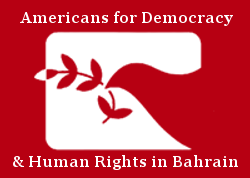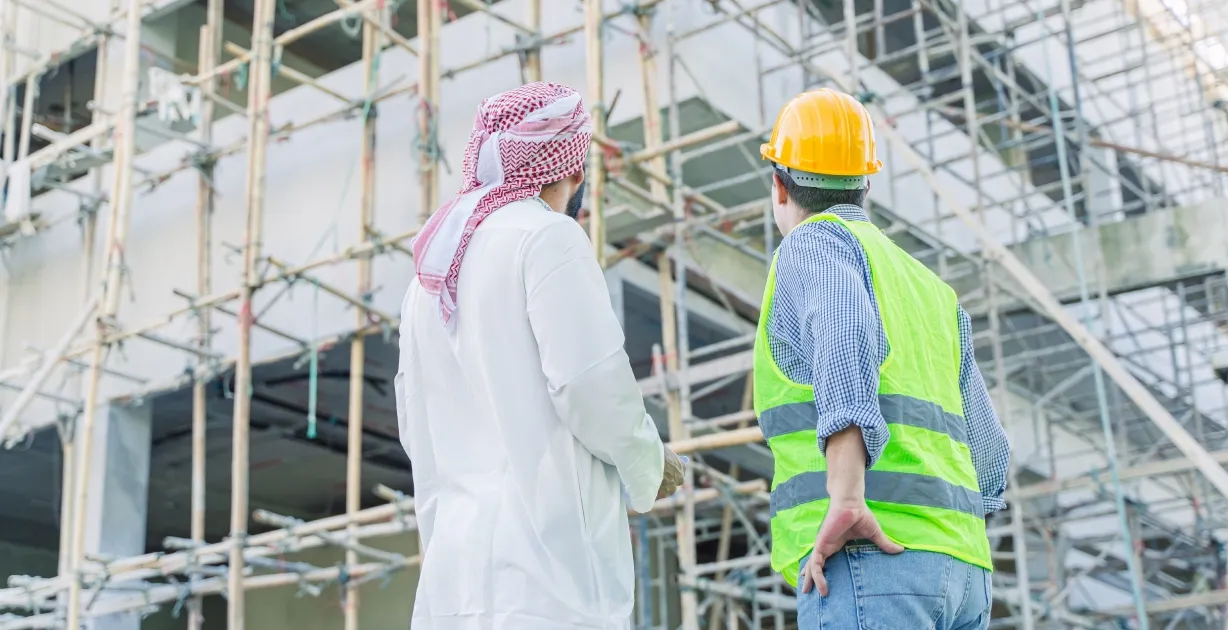Summary
The United Arab Emirates is the country with the highest proportion of international migrants in the world. Labour migration in the kingdom is governed by a restrictive and abusive system, named kafala, that causes numerous and well-documented abuses. This briefing paper contextualizes the kafala system in the Gulf Cooperation Council (GCC) countries and the United Arab Emirates singularly and goes on to outline the different migrant workers’ abuses and the UAE’s human rights international law violations. Lastly, it delves into the International Community’s stance on the issue and proceeds to make recommendations.
- Migration in the United Arab Emirates: an overview
With 8.7 million migrant workers accounting for 88% of the kingdom’s population, the United Arab Emirates (UAE) is the country with the highest proportion of international migrants in the world, fundamentally low-wage and semi-skilled workers. The UAE is also the second-highest migrant destination country in the Middle East and the Gulf region after Saudi Arabia and constitutes, together with India, the third-largest corridor in the world.
In this vein, an estimated 3,5 million Indians and more than 1 million Bangladeshis were living in the United Arab Emirates in 2020, along with over 950,000 Pakistanis, 710,00 Egyptians, and 470,000 Filipinos according to the last data provided by the UN for 2013. These nationalities therefore constitute the top five areas of origin of the foreign labour force in the country, although in 2022 the number of Nepalis traveling to the UAE for employment was superior to those of Bangladeshis.
Following this trend, the United Arab Emirates was also the largest source country of remittances in Asia in 2019 and 2020, with remittances reaching USD 45 billion and USD 43 billion respectively.
Furthermore, it should be pointed out that migrant workers make up more than 90% of the private sector employees in the UAE.
Alongside these data, however, some discouraging statistics reveal a harsh reality: on any given day in 2021, there were 132,000 individuals living in modern slavery in the UAE.
In this regard, it is essential to introduce the private sponsorship system that regulates the labor migration to the UAE that has existed in the GCC states and other Middle Eastern countries for decades: the kafala system.
- The kafala system in the GCC countries and the UAE specifically
- Historical context
The modern labour system of kafala (sponsorship) arose in the Gulf countries in the early twentieth century to regulate the treatment of foreign workers in the pearl industry and expanded in the 1950s to respond to the new oil-rich countries’ need for migrants to work on large-scale infrastructure projects. Bearing in mind the relatively small populations of the Gulf countries, the sponsorship system objective was, specifically, to provide temporary labor that could be rapidly brought into the country during periods of economic growth and be expelled when the economy weakened.
To this day, this system still defines the relationship between migrant workers and their employers -local sponsor or kafeel– in the Gulf Cooperation Council (GCC) countries of Bahrain, Kuwait, Oman, Qatar, Saudi Arabia, and the United Arab Emirates (UAE) as well as in the Arab states of Jordan and Lebanon. This reality explains why “in no other region of the world do citizens comprise such a small proportion of the population”.
Originally, the system favored Arab workers from nearby countries, particularly Egypt, Yemen, and Palestine. However, in the mid-1980s to mid-1990s, the period of austerity that followed after the falling of oil prices and the consequent reduction of costs in the public and private sectors led to the substitution of the existing Arab workers for less skilled Asian workers. Another reason estimated for this substitution was the fear that Arab workers would spread a pan-Arab ideology that could undermine the Gulf monarchies. On top of that, after the 1990 Gulf crisis, around two million Egyptians, Palestinians, and Yemenis were expelled from the region in relation to their government’s support for Iraq’s invasion of Kuwait, which additionally explains why the Arab workers were outnumbered.
- Definition and implications of the kafala system
Although the laws and procedures of the kafala system vary from state to state, it is generally defined as a restrictive system that ties migrant workers to their employer, exacerbating the employer-worker power imbalance and preventing migrant workers from reporting abuse or exploitation. This explains why some activists and human rights organizations have labeled it as a “modern form of slavery”. Particularly, the delegation of the responsibility for migrant workers to employers, which happens under the sponsorship permits that the state gives local individuals or companies to employ foreign laborers, grants the latter control over the ability to reside in, work, and exit the country of the former -migrant worker’s immigration status. This high degree of control that employers hold over workers results in abuses such as confiscation of passports, undue recruitment fees, long hours of work, poor working and living conditions, wage theft, etc. that will be explained in more detail later on. Also, the sectors in which migrant workers suffer particularly the risks of forced labor are those of construction, domestic work, and service industries.
Another implication of kafala is the total exclusion of migrant workers from integrating into the local society, what in migration studies is called the model of “differential exclusion”. This frame, which can be found in Gulf countries, implies that immigrants will have almost exclusive access to the labor market, but will not be able to benefit from any other type of assistance, compensation or policies provided by the administrations -welfare systems, citizenship, and political participation. This elucidates why in the UAE, unlike nationals, migrant workers “cannot receive government allowances for housing, subsidized health care, or other services and are therefore dependent on their wages to access essential services”.
In addition, there is a less well-understood role of the kafala system that it is appropriate to bring up: the creation of a social contract between the state and its citizens, a crucial element in the state’s stability. In this regard, according to UAE authorities, the sponsorship system, along with having enabled the country to preserve its national identity, has also provided relevant economic and social advantages to those who enjoy citizenship and has helped maintain a safe and stable society. This, in other words, translates into the UAE giving citizens rights and power over migrants and the wealth generated by them -as well as a wide range of social benefits- in exchange for significant restrictions on civil and political freedoms. As a result of the advantages Emirate citizens receive from this labour system, any UAE government attempt to reform it following international standards and labor conventions could be seen by them as a threat to their privileges and therefore, be unpopular. That clearly represents a challenge worth considering when talking about modifying the labour regime that cannot avoid the question of implementing wider civil and political reforms. Indeed, without active enforcement and recognition of a series of workers’ rights – like the rights to freedom of association and collective bargaining as well as other trade union rights- the UAE’s new labour laws will not be able to address the country’s labour exploitation practices.
- Attempts of reform in the UAE
The UAE, like many other states in which the kafala system regulates labour migration, has tried to address the concerns that arise with the functioning of such a system through legislation, even though “these laws are rarely enforced and human rights abuses remain rampant”. In this vein, some of the legal reforms that the UAE has passed over recent years have prohibited asking migrant workers for recruitment fees, removed the requirement of seeking an employer´s permission to change jobs or leave the country, and increased access of workers to labour dispute resolution mechanisms. Furthermore, UAE labor law mandates monthly payments through the Wage Protection System. Nonetheless, as had been said, gaps in law implementation and enforcement still render migrant workers vulnerable to trafficking, forced labor, and other exploitative practices.
The lack of predisposition to effectively confront the country’s labor abuses is also reflected by the UAE’s perception of trafficking as a problem that only concerns women, children, and commercial sex exploitation. Certainly, the UAE has shown its unwillingness to investigate violations of Emirate laws that are often considered trafficking indicators -passport confiscation, contract substitution or delayed/nonpayment of wages- as potential trafficking crimes. Moreover, although the UAE is one of the three countries in which exists a labor law that explicitly prohibits and criminalizes all forms of forced labor, the truth is that forced labour allegations are often considered regulatory violations and, consequently, businesses are only subjected to fines or the loss of their licenses. Also, the UAE’s law excludes domestic workers, shepherds, camel herders, and farm workers, leaving them even more vulnerable to exploitation.
- Migrant workers abuses under the kafala system in the UAE
- Fraudulent recruitment practices
As the International Labour Organization says, the recruitment stage in the migration process can determine whether workers have a positive migration experience or, by contrast, an exploitative one where debt bondage and low earnings are the norm. In this stage, the private recruitment agencies in the countries of origin hired by the sponsors play an important role, since they are the only ones in charge of finding workers and facilitating their entry into the host country. The practice at the heart of the fraudulent behavior of the recruitment industry is the charge of high recruitment fees to low-skilled migrant workers -especially men and women in sectors such as construction, agriculture, and services like domestic work. In the UAE, although local labor laws prohibit charging fees to workers, the reality is that this abuse, along with wage theft, is endemic in the country, translating into the migrants taking loans from local moneylenders at annual interest rates as high as 50 percent, selling off assets or depleting family savings. What is important to underscore here is that worker payments are primordial to the control of migrant workers, and that way, also lead to other forms of exploitation like the long hours of work without overtime pay, the non-payment of wages or the payment of wages less than stipulated in the contract -known as wage theft.
Other fraudulent practices that occur in the recruitment process may include:
→ Debt bondage: an abuse linked to the payment of the previously mentioned high recruitment fees whereby employers reduce or withhold workers´ wages in order to pay off recruiters. In other cases, payment of lower wages or wage theft is just a practice used by employers as punishment.
→ Deception about the nature and conditions of work and contract substitution: differences in terms of pay and/or work between the contract that was offered initially at the time of recruitment in the origin country and the contract that was actually signed in the working country. Usually, contract substitution implies the acceptance of poor wages and working conditions by signing multiple documents in languages that migrants do not understand.
In any case, the excessive payments by low-skilled workers and the additional aforementioned abuses related to the recruitment stage can significantly reduce the amount of money that workers can spend at the destination country and also send home.
- Other abuses
Although unlawful in the UAE, the lack of punishment for sponsors who confiscate employees’ passports to restrict workers’ movement makes this practice a common abuse in the country, the Dubai Expo 2020 being an example of just that.
Furthermore, those workers who leave their employers without permission, including to escape abuse, face punishment for “absconding”, which can lead to fines, detention, and deportation.
To complete the picture of recurrent abuses migrant workers face it should also be mentioned the precarious working conditions that risk workers´ health and safety and the poor and unhealthy housing and living conditions.
- The situation of migrant women in the UAE
Given the singular situation migrant women experience according to the separate nature of the work they realize, it is worth expanding on this reality.
In this respect, it should be stated that, since the mid-1980s, female migrant workers have increasingly dominated the flow of workers to the UAE, fundamentally, in the domestic work and personal services sectors. Areas that, traditionally, were occupied by men in the kingdom. In fact, according to ILO, although the statistics on foreign female domestic workers suffer from accuracy, accessibility, and transparency, it is possible to assert a dramatic feminization of the workforce in the 1980s and to think that the number of foreign female domestic workers alone must be higher or at least equal to that of the indigenous population. Foreign female domestic workers in the United Arab Emirates are everywhere -every house, every city, and even desert areas- and are mostly recruited from the Philippines, Indonesia, India, Bangladesh, Sri Lanka, Nepal, and Ethiopia.
Foreign migrant domestic workers live a unique situation, compared to other migrant workers, because of the physical, psychological, social, and cultural isolation they endure as a dominant feature of their migrant experience in the United Arab Emirates. Moreover, as we said earlier, the UAE labor law specifically excludes domestic workers from its protections, which, together with the highly restrictive kafala system and the social practices towards foreign female workers, “enslave them to their employers until the duration of their contract ends”. Hence, leaving them particularly vulnerable to human rights abuses. In this sense, although victims of common abuses in the kafala system like those exposed above, it is pertinent to emphasize the physical, psychological, and sexual abuses of migrant domestic workers that Human Rights Watch has reported in the country (2014), including: beating, punching, slapping, kicking, choking, spitting, pulling; sexual assault or harassment; and shouts, insults, threats, and humiliations.
- International obligations of the UAE
Notwithstanding the UAE’s non-ratification of paramount international human rights binding instruments such as the International Covenant on Civil and Political Rights (CCPR) or the International Covenant on Economic, Social and Cultural Rights (CESCR), other treaties can be used to hold the UAE accountable for its human rights violations. In this regard, the country is party to some international treaties prohibiting forced labour and other human rights abuses, including: the Forced Labour Convention, (1930), the C105 – Abolition of Forced Labour Convention (1957), the International Convention on the Elimination of All Forms of Racial Discrimination (1965) and the Convention on the Elimination of All Forms of Discrimination against Women (1979). In addition, the UAE has also ratified the Universal Declaration of Human Rights (UDHR). A declaration that, despite being conceived as a document without binding legal effect, includes many provisions considered universally obligatory.
In compliance with its international obligations, UAE’s labor law prohibits and criminalizes all forms of forced labour. However, as documented previously, forced labour allegations are often considered regulatory violations in practice. This, together with general enforcement gaps in labour law, can help explain why migrant workers’ abuses in the country, which in many cases amount to forced labour, are still rampant.
But what is forced labour specifically? According to the International Labour Organization, forced labour can be understood as “work that is performed involuntarily and under the menace of any penalty” and it refers to situations in which persons are coerced to work through the use of violence or intimidation or by more subtle mean as manipulated debt, retention of identity papers or threats of denunciation to immigration authorities. Notably, one of the elements that give meaning to the definition, involuntariness, applies to cases when an employer or recruiter makes false promises so that a worker takes a job that he/she would not have accepted otherwise. Indebtedness, passport confiscation, risk of absconding, and contract substitution are all practices registered in the UAE that clearly indicate that the conditions under which many migrant workers live, amount to forced labour. The United Arab Emirates, therefore, is in violation of its international obligations under de ILO Conventions. Particularly, it could be mentioned:
Art. 1 of the Forced Labour Convention, 1930: “Each Member of the International Labour Organisation which ratifies this Convention undertakes to suppress the use of forced or compulsory labour in all its forms within the shortest possible period”.
Art. 2 of the C105 – Abolition of Forced Labour Convention, 1957: “Each Member of the International Labour Organisation which ratifies this Convention undertakes to take effective measures to secure the immediate and complete abolition of forced or compulsory labour as specified in Article 1 of this Convention”. It should be referred singularly to section b) of art. 1 in relation to the use of forced labour “as a method of mobilizing and using labour for purposes of economic development”.
The migrant workers’ situation in the country also violates human rights enshrined in the Universal Declaration of Human Rights such as art. 13 point 2, art. 23 and art. 24.
- Where do the European Union and the United Nations stand?
There is barely any recent information about the European Union’s stance on migrant workers’ human rights abuses in the United Arab Emirates other than a 2020 statement from the Chair of the European Parliament Delegation for relations with the Arab Peninsula (DARP). In it, the DARP stresses the precarious living and working conditions of migrant workers in the Gulf countries and demands these countries to guarantee basic civil and social rights to all resident persons in their territories, irrespective of their nationality and working status. Additionally, the European Parliamentary Research Service, the European Parliament Think Tank that provides Members of the European Parliament (MEPs) and parliamentary committees with independent research on policy issues, elaborated a briefing about worker’s rights during the 2022 FIFA World Cup in Qatar that denounced the kafala system in the Gulf Cooperation Council countries as the root cause of migrant workers´ abuses. Apart from these sources, more focused on migrant workers in the region, it is also relevant to mention the joint communication of the European Commission and the High Representative of the Union for Foreign Affairs and Security Policy to the European Parliament and the Council on a strategic partnership with the Gulf of May 2022. The interesting thing about this particular communication is that it has raised some questions about how those relations should be. The European Parliament and nongovernmental organizations like Human Rights Watch, on their part, believe that any closer partnership with Gulf countries, as opposed to how it is understood in the joining communication, must be linked to clear human rights benchmarks.
What the EU does, however, is participate in a number of initiatives to protect and support migrant workers in South Asian migrant origin countries: the EU-UN “PROTECT” project or IOM-EU-Sweden joint programme are examples of that.
Moving on to the United Nations, it is possible to say that migrant workers´ abuses under the kafala system in the Gulf countries is a topic that has generally preoccupied the organization, as several declarations and publications of Special Rapporteurs, agencies and specialized bodies within the UN system demonstrate. When narrowing the attention to the comments on migrant workers’ abuses in the United Arab Emirates, it is worth mentioning the recommendations made by several countries on the Fourth cycle of UAE’s Universal Periodic Review (UPR). As has been already stated, the kingdom has ratified just three out of nine human rights international treaties: the CCPR, the CESCR, and the International Convention on the Protection of the Rights of All Migrant Workers and Members of Their Families (CMW) -which are relevant for the matter- cannot be found among them. Thus leaving the UPR as the only relevant procedure to hold the UAE accountable. In this regard, several recommendations have been made in the last cycle revolving around reforms and improvements in labour rights. For example:
- Canada: Further strengthen labour rights through reforms that reduce migrant workers’ dependency on their employers and ensure that domestic workers’ rights are fairly addressed through appropriate revisions to the domestic worker’s law.
- Australia: Work to ensure employer compliance with laws protecting the rights of workers, particularly migrant workers.
- Kenya: Extend all labour rights protections to all migrant workers, including domestic workers, those with irregular status, and those on temporary employment contracts.
- Ecuador: Ensure the implementation of policies to protect foreign workers, in particular women migrant domestic workers.
- Malaysia: Continue efforts to protect the rights of workers, including foreign domestic workers, from discrimination and sexual harassment, by strengthening its labour laws and enforcement as well as improving working conditions.
- Sierra Leone: Abolish the kafala system.
In these selected recommendations, it is possible to appreciate the concern of the international community about each and every one of the troubling characterizing trends of labour migration in the United Arab Emirates.
- Recommendations. What should the UAE do? And the International Community?
In light of the exposed labour rights situation of migrant workers in the country, there are several recommendations the United Arab Emirates would better consider.
One of the things the kingdom should do is accept the recommendations made to it within the framework of the Universal Periodic Reviews and work actively to ensure their implementation, which would qualitatively improve labour and migrant rights in the country. In this vein, it would be singularly important to work to eliminate loopholes in enforcement and strongly criminalize those who violate labour laws and workers’ rights. In addition, to effectively dismantle the kafala system and move towards a fairer labour system, the country should rely on international organizations’ support and guidance such as that offered by the International Labour Organization (ILO).
The international community, on its part, has no choice but to exert pressure on the UAE to follow the UPR review´s recommendations and to ratify important international human rights instruments, which would submit the country to the scrutiny of their committees. As part of the international community, the EU, however, could play a more active role in ensuring migrant workers’ rights if its closer engagement with the countries in the region and the UAE, in particular, would go hand in hand with strict compliance with human rights international standards. Nonetheless, such an approach cannot be expected in the short term because of Europe’s reliance on GCC countries’ fossil fuels. A reality that has already led the EU to tone down its response to human rights violations committed by fossil-fuel-producing countries in the past. Only significant progress in the accomplishment of the European Green Deal and the subsequent reduced “energy dependency on governments with a poor human rights record” could prompt an energetic response from the EU to human rights violations in GCC countries, including migrant workers abuses.
- Conclusions
Exorbitant recruitment fees and indebtedness, passport confiscation, risk of absconding, and contract substitution define the migrant worker’s experience in the United Arab Emirates. As long as this is the case, the country will persistently violate its human rights obligations. To rectify the situation, the UAE must follow the recommendations registered in the last Universal Periodic Review and the international community should invest more political will in achieving just that.





